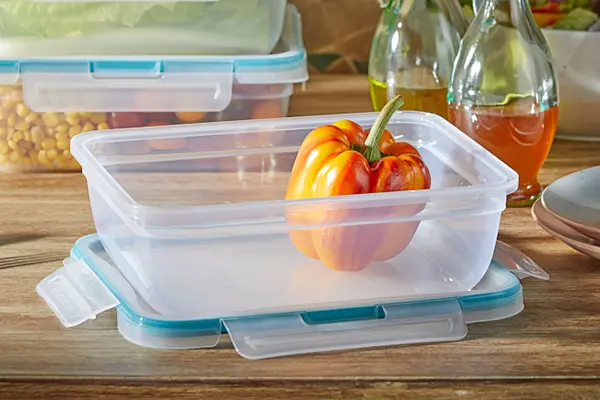Is Storing Food in Plastic Containers Safe and Healthy?
Picture this: you’ve prepped a delicious batch of leftovers, ready to conquer the week with healthy lunches. But then, the question arises: is it healthy to store food in plastic containers? Fear not, fellow food enthusiasts! This comprehensive guide will delve into the safety and health implications of using plastic food containers, empowering you to make informed choices for your well-being.
Unveiling the Plastic Landscape: Understanding Different Types and Potential Concerns
Before exploring the safety aspects, let’s acknowledge the diverse types of plastic food containers:
- High-density polyethylene (HDPE): Often marked with the number “2” and considered generally safe for storing most foods at room temperature.
- Low-density polyethylene (LDPE): Marked with the number “4” and typically used for flexible food wrap or squeezable bottles. While generally safe for cold storage, some concerns exist regarding potential leaching at higher temperatures.
- Polyvinyl chloride (PVC): Marked with the number “3” and not recommended for food storage due to potential leaching of harmful chemicals.
- Polypropylene (PP): Marked with the number “5” and considered one of the safest options for food storage, offering good heat resistance.
H2: Weighing the Evidence: Potential Risks and Safety Considerations
Now, let’s explore the potential risks associated with using plastic food containers and safety considerations to keep in mind:
Potential Risks:
- Leaching of chemicals: Some chemicals present in certain plastics, like bisphenol A (BPA) and phthalates, have raised concerns about potential health risks, although research findings remain inconclusive.
- Microplastics: The potential breakdown of plastic into tiny particles, known as microplastics, has emerged as a growing concern, with potential implications for human health and the environment.
Safety Considerations:
- Choose the right type of plastic: Opt for containers marked with the numbers “2” or “5” (HDPE and PP) for food storage.
- Avoid storing hot food for extended periods: Heat can accelerate the leaching of chemicals from some plastics. Transfer leftovers to containers once they cool down.
- Minimize reuse: While some containers can be safely reused, frequent washing and heating can degrade the plastic, potentially increasing the risk of leaching.
- Consider alternative storage options: Glass containers or stainless steel containers offer safe and sustainable alternatives to plastic, especially for long-term food storage.
H3: Making Informed Choices: Navigating the Plastic Maze with Confidence
While complete elimination of plastic from all aspects of life might not be feasible, informed choices can significantly minimize potential risks:
- Prioritize fresh and home-cooked meals: Whenever possible, opt for fresh ingredients and prepare meals at home to reduce reliance on pre-packaged foods often stored in plastic.
- Invest in reusable containers: Consider using glass or stainless steel containers for storing leftovers, especially for long-term storage or for frequently reheated meals.
- Embrace responsible disposal: When discarding plastic containers, ensure proper recycling as per local guidelines.
Remember: The decision of whether or not to use plastic food containers ultimately rests with you. By understanding the potential risks, safety considerations, and alternative options, you can navigate the plastic maze with confidence and make informed choices that align with your health and environmental concerns.
Post time: 03-14-2024




